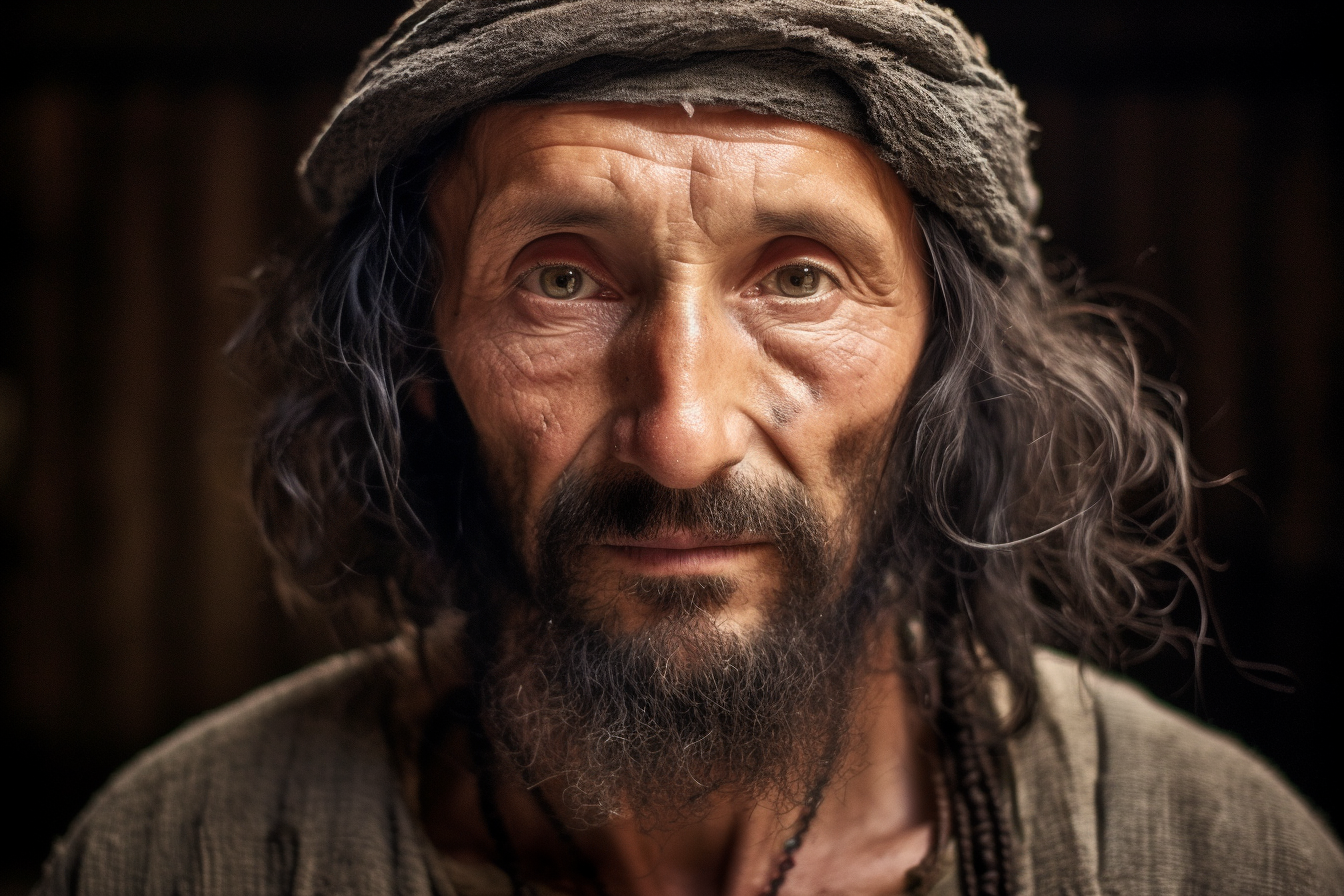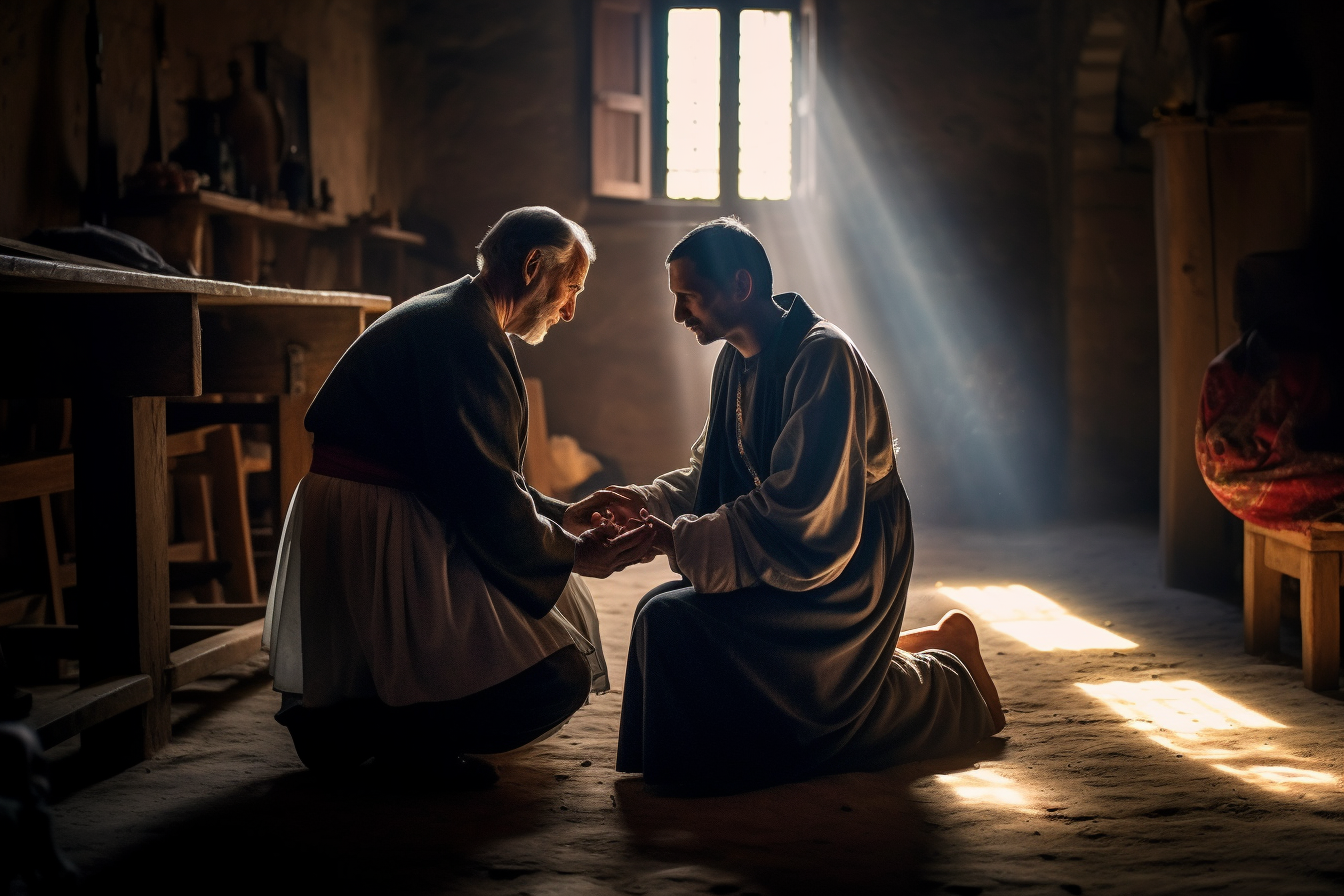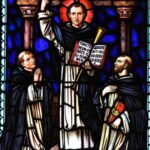
St. Pantaleon
St. Pantaleon
When they lived:
St. Pantaleon, also known as Saint Panteleimon, lived during the late 3rd century to early 4th century AD. His exact birth and death dates are not widely agreed upon, but he is believed to have lived around 275-305 AD.
Where they lived:
St. Pantaleon was born in Nicomedia, a city located in present-day Turkey. During his life, Nicomedia was an important center of the Roman Empire and served as the capital of the eastern provinces.
Notable world events during the time of their life:
- Diocletian’s Persecution (303-311 AD): St. Pantaleon’s life coincided with the infamous Diocletianic Persecution, one of the most severe and widespread persecutions of Christians in the Roman Empire. This event had a profound impact on the Christian community, resulting in the martyrdom of many believers, including St. Pantaleon himself.
- Edict of Milan (313 AD): During St. Pantaleon’s time, the Edict of Milan was issued by Emperor Constantine the Great and his co-emperor Licinius. This edict granted religious tolerance to Christianity, officially ending the persecution of Christians and allowing them to practice their faith openly.
- Council of Nicaea (325 AD): This significant ecumenical council was convened to address theological disputes within the Christian community, particularly the Arian controversy. Though St. Pantaleon did not directly participate in this event, it had a profound impact on the development of Christian doctrine.
- Birth of Constantine the Great (272 AD): The birth of Constantine the Great, who would later become the first Roman Emperor to convert to Christianity and play a pivotal role in its legalization and promotion, occurred during St. Pantaleon’s lifetime.
- Galen’s Medical Contributions: St. Pantaleon’s era saw the influence of Galen, a prominent physician and medical researcher. Galen’s works on anatomy, physiology, and medicine laid the foundation for medical understanding for centuries to come, influencing the development of both Western and Islamic medical traditions.
Their patronage:
St. Pantaleon is widely venerated as the patron saint of physicians, doctors, and healing. His life as a healer and his ultimate martyrdom for his Christian faith make him a symbol of compassion, selflessness, and unwavering devotion. His story resonates with those in the medical profession and those who seek healing, both physical and spiritual. St. Pantaleon’s patronage extends beyond the realm of Catholicism, touching the lives of people from various cultural and religious backgrounds who admire his legacy of service and sacrifice.
Early Life
Once in 275, Izmit, Nicodemia, near the Black Sea, now modern Turkey, bore a gifted physician with the ultimate power of healing, a penitentiary, and later a martyr.
To talk about his patrilineal lineage, his father was Eustorgius, and sources call him a non-devotee till lateral in the life of Pantaleon,but his mother, Eubula, was a fervent Christian.
Sadly, Eubula died while Pantaleon was a juvenile. While she had exposed him to Christianity, Pantaleon did not exercise his faith.
Journey Towards Faith
His father, Eustorgus, recommended him study under a famous practitioner and physician, and ultimately he was appointed by Emperor Maximus as his royal physician.
Regarded in the West in the list of the late-medieval Fourteen Holy Helpers and in the East as one of the Holy Unmercenary Healers, he was a martyr of Nicomedia in Bithynia during the Diocletianic Persecution of 305 AD.
While practicing in court, he met a Christian named Hermolaus, who later became his loyal advisor and a close friend. Hermolaus expounded to him that, though the famous physicians of earlier generations knew how to heal bodies, Jesus Christ was a far more magnificent physician, apt to heal not only bodies but souls by His divine doctrine.
On the way to work, Pantaleon suddenly accomplished extraordinary healing, recovering a child from absolute death following a bite from an aviper. Calling for no additional testimony of the power of the Lord, he was baptized and started an uncompromising path of study of his new faith. He finally treated a blind man. Hearing about his miraculous healing, his father also converted to Christianity.

Freeing of Slaves
When his father perished, Saint Pantaleon freed all his slaves on the inherited estate, traded a big part of his belongings, and spent the money to free slaves and the poor.
He treated different sicknesses and quickly became renowned in Nicodemia, growing popular among rival physicians who reported him to the Emperor.
His opponents asked Pantaleon to give up to the pagan Roman gods, but he declined. They then sentenced him to torture and to be killed. Later, he beheaded Saint Pantaleon in 303.
His body was blessed with myrrh and buried on the outskirts of the city. Devotees later translated his remains to Constantinople, where they are revered today. It is claimed that his blood, conserved in a small vial,liquefies on his feast day, becoming oxygenated. Charlemagne again translated some of his relics, including his head, to France and remained in the nunnery of Saint Denys near Paris and Lyons.
Patronage
Saint Pantaleon, the noble’s name, meant ‘all-compassionate one’. He is the patron saint of physicians, apothecaries, midwives, livestock, lottery winners and victories, lottery tickets, and is invoked against headaches, consumption, locusts, witchcraft, accidents, and loneliness. He is also a helper for crying children.
Canonization
His status is Pre-Congregation. The term is used for saints that were canonized a long time ago. The process either took place before or after the establishment of an organization that could keep a record of the exact time of the process.
Sometimes it indicates that beati were canonized by local community bishops, primates, or patriarchs of the saint, usually due to prevalent devotion.
To simplify, it indicates that the dates for beatification and/or canonization are not publicly known due to the absence of a dignified recording system. If there were records, they are not commonly known.
5 Interesting Facts About St. Pantaleon
- In Italy, Pantaleon promises lottery numbers, victories,
and winners in dreams. - Even though there is proof to suggest that a martyr named
Pantaleon prevailed; some believe the legends of his life and
death to be merely a fable. - Armenians maintain that the Amaras Monastery in Nagorno-Karabakh
encloses monuments of St. Pantaleon, which were esteemed in the
eastern provinces of Armenia. - St. Pantaleon is the signature of the character Pantalaimon in
Philip Pullman’s His Dark Materials series of novels - A Russian company renamed the Russian battleship Potemkin to
Panteleimon after her recovery after the mutiny of 1905.
Prayer to St. Pantaleon
St. Panteleon, who during life didst have great pity for the sick and, with the help of God, often relieved and cured them, I invoke your intercession with God that I may obtain the grace to serve Him in good health by cheerfully fulfilling the duties of my state of life. But if it be His holy will to visit me with illness, pain, and suffering, do thou aid me with thy powerful prayer to submit humbly to His chastisements, to accept sickness in the spirit of penance, and to bear it patiently according to His holy will. Amen.



